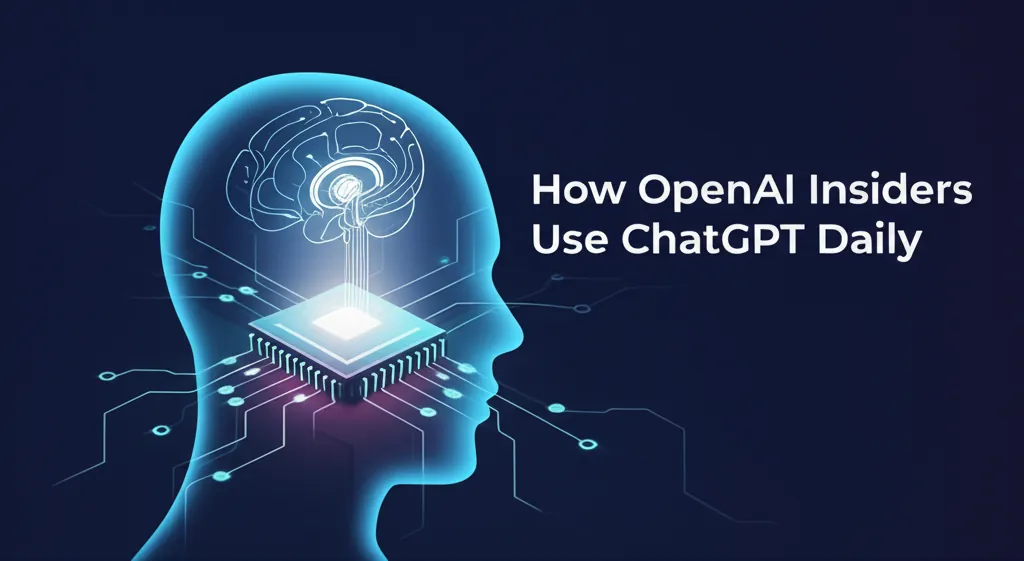Developer Offer
Try ImaginePro API with 50 Free Credits
Build and ship AI-powered visuals with Midjourney, Flux, and more — free credits refresh every month.
AI in the Classroom and Its Impact On Student Brains

It started with a woman named Sally. When Jocelyn Leitzinger, a professor at the University of Illinois in Chicago, asked her students to write about personal experiences with discrimination, she noticed a strange pattern. Many of the stories featured a victim named Sally. "It was very clear that ChatGPT had decided this is a common woman's name," Leitzinger explained. The students, she realized, "weren’t even coming up with their own anecdotal stories about their own lives."
Leitzinger estimates that about half of her 180 students inappropriately used ChatGPT last semester. Ironically, this even occurred during assignments about the ethics of artificial intelligence, a fact she found "mind-boggling."
A Glimpse into the Brain on ChatGPT
Leitzinger's classroom observations align with the findings of a recent, widely circulated preprint study from MIT researchers. The study, though small and not yet peer-reviewed, suggested that students using ChatGPT to write essays exhibit less critical thinking.
In the experiment, 54 students were divided into three groups. One group used only their brains to write essays, another used a search engine, and the third used ChatGPT. The researchers monitored their brain activity with EEG devices.
The results were striking. The ChatGPT users scored significantly lower than the brain-only group. Their EEG scans showed less connectivity between different brain regions. Furthermore, after writing their essays, over 80 percent of the ChatGPT group couldn't recall anything they had just written, compared to only about 10 percent in the other two groups. The teachers grading the essays easily identified the AI-assisted work, calling them "soulless" for their good grammar but lack of personality and insight.
Interpreting the Data Cautiously
Despite headlines suggesting AI makes students lazy, the study's lead author, Nataliya Kosmyna, urges caution. She highlighted a key detail from a fourth session where the brain-only group was allowed to use ChatGPT. This group showed even higher levels of neural connectivity, suggesting that AI could potentially enhance learning if used thoughtfully. Kosmyna emphasized that the small sample size means it's too early to draw firm conclusions, calling for more research into how these tools can be used to support education.
Ashley Juavinett, a neuroscientist at UC San Diego who was not involved in the research, also criticized some of the "offbase" headlines, stating that the paper lacks the methodological rigor to make broad claims about the neural impact of using large language models like ChatGPT.
Thinking Outside the Bot The Future of Writing and Learning
For educators like Leitzinger, the study reflects a tangible shift in student work since ChatGPT's release in 2022. Essays now have fewer spelling errors but also less authentic insight. She expressed empathy for students, who often face confusing mixed messages, with some classes banning AI while others encourage its use.
While some compare AI tools to the introduction of calculators, Leitzinger points out a critical difference. A student can use ChatGPT without any prior knowledge of a subject, effectively skipping the essential steps of research, synthesis, and analysis that are fundamental to learning.
This issue extends beyond the classroom. Academic journals are grappling with a flood of AI-generated papers, and the publishing industry is also seeing a rise in AI-written books. This trend raises a profound question for the future of knowledge work.
As Leitzinger puts it, "Writing is thinking, thinking is writing, and when we eliminate that process, what does that mean for thinking?"
Compare Plans & Pricing
Find the plan that matches your workload and unlock full access to ImaginePro.
| Plan | Price | Highlights |
|---|---|---|
| Standard | $8 / month |
|
| Premium | $20 / month |
|
Need custom terms? Talk to us to tailor credits, rate limits, or deployment options.
View All Pricing Details

